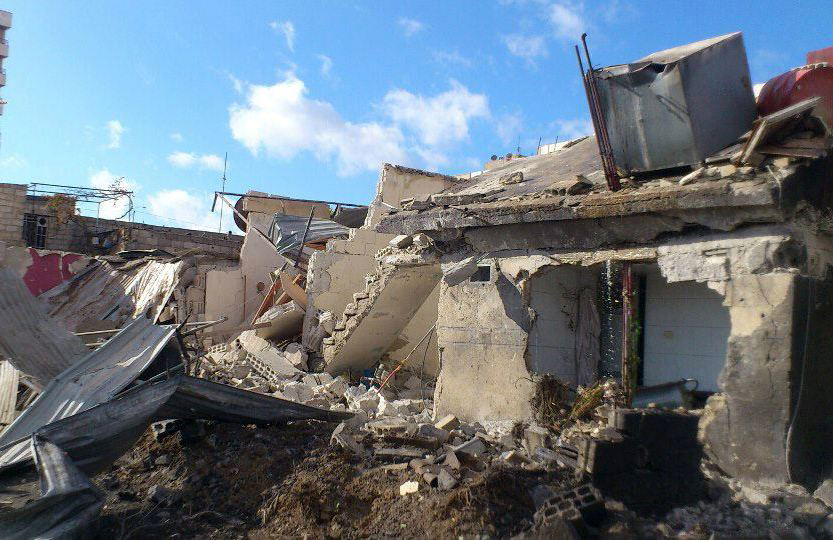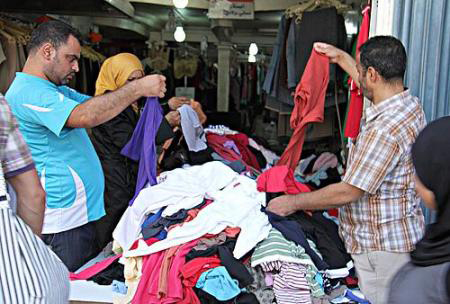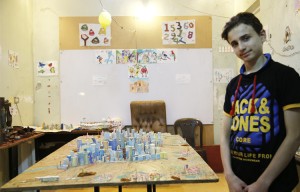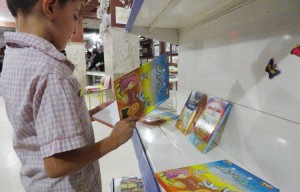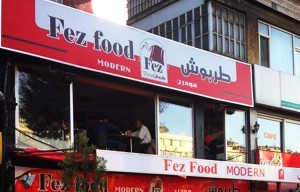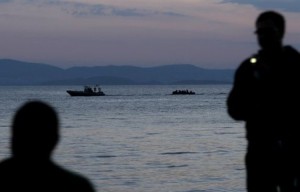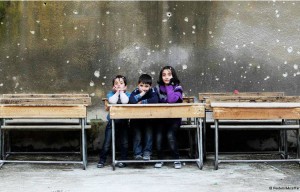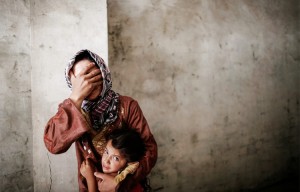
Damascenes buy their graves in the black market

Enab Baladi Issue # 85 – Sun, Oct. 06, 2013
Damascenes are no longer concerned with sustaining a decent life or ensuring prosperity. Instead, they’ve become obsessed with their life after death; with finding a grave where their bodies would be buried and rest in peace.
Under war circumstances, graves’ prices in old Damascus have dramatically increased where neither the average-waged families nor the poor could afford or handle. The deterioration of Syrian economics alongside the myriad of the dead and killed have badly affected the market and rapidly contributed to the prices’ increase.
Inasmuch as the number of killings has multiplied to encompass civilians as well as soldiers, plus the limited number and size of Damascus overcrowding cemeteries, graves’ prices have become progressively greater and therefore, people’s demands on buying graves during the last two years have increased. In fact, and according to the state prices, the best grave must not exceed the price of 20 thousand Syrian pounds. Issued in 1971 by the local council of Damascus, given the number 43, a resolution has stated that ‘the price of the normal grave should be 5000 Syrian pounds, while it is 10000 Syrian pounds for the mosaic one, 14000 Syrian pounds for the stone grave and 16000 Syrian pounds for the marble one.
However, these prices maintain fake when it comes to reality. The black market exploits people’s needs and invests even on graves trade. According to Hassan, a grave’s price in the black market can reach 600 to 800 thousand Syrian pounds. Hassan lives in Almidan area, his father passed away a month ago. He assured that his father’s funeral cost him around 900 thousands Syrian pounds. For a grave in ‘bab sger’ cemetery which was a private property to a random damascene family, Hassan spent 750 thousand Syrian pounds. Not to forget the other costs such as those of printing and distributing the obituary and other funeral’s costs.
Abu Shadi is a gravedigger and a guard of ‘Aldahdah’ cemetery which is located in the middle of Damascus. In his conversation with an Enab-Baladi correspondent, Abu Shadi assured that ‘there hadn’t been any kind of grave purchase for so long, and the majority of graves at ‘Aldahdah’ cemetery are private property and dedicated to bury the owner’s children and relatives. Sometimes these graves may be sold to people who haven’t got any, but for a huge amount of money in return. Abu shadi added that ‘in order for a body to get buried, permission should be issued by the governor of Damascus council prior to the purchase process. Otherwise, the body could be buried in another cemetery, ‘Najha’ for example, where graves are available in cheaper prices’.
‘A dead at the top of dead’ is the way of burying bodies in Damascus. This mechanism applies to all cemeteries located in the nearby areas. In fact there are 33 cemeteries in Damascus and its neighborhoods. The oldest one is known as ‘bab sger’ located in ‘Bab Msallah’. ‘Aldahdah’ cemetery, located in Baghdad Street, comes after. And finally there comes ‘Shiekh Arslan’ Cemetery in East Damascus.
Long ago, at these cemeteries, one way of burial was adopted due to the deficit number of the cemeteries in accommodating new graves. That is one grave can accommodate more than one body, where the recently-dead may be buried over a formerly-dead. However, very strict regulations apply in such situations, lots of documents, permissions and identification approvals should be submitted prior to the burial process; especially those documents that prove the family relationship between the two dead bodies. Another condition is that there should be a period of 5 to 10 years between the death dates of the two bodies. Eventually and more importantly is that the burial is dependent on the agreement of the formerly-dead family.
اذا كنت تعتقد/تعتقدين أن المقال يحوي معلومات خاطئة أو لديك تفاصيل إضافية أرسل/أرسلي تصحيحًا
إذا كنت تعتقد/تعتقدين أن المقال ينتهك أيًا من المبادئ الأخلاقية أو المعايير المهنية قدم/قدمي شكوى
-
تابعنا على :




